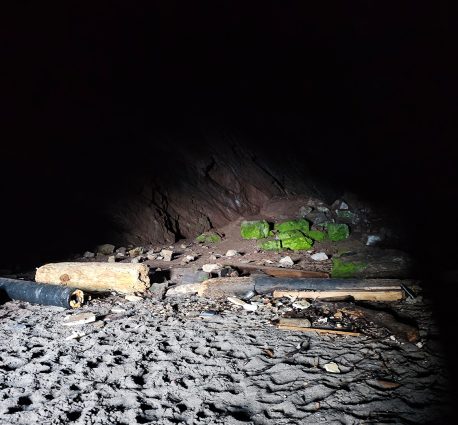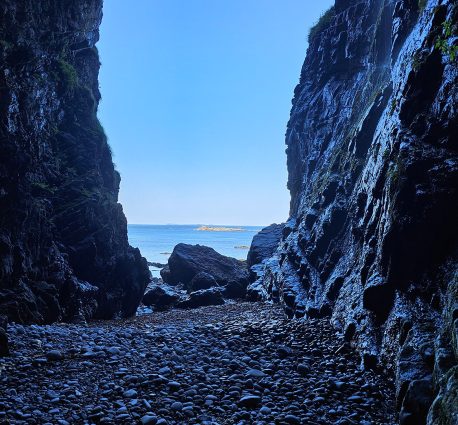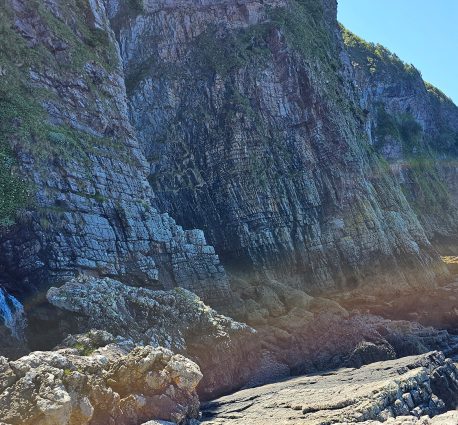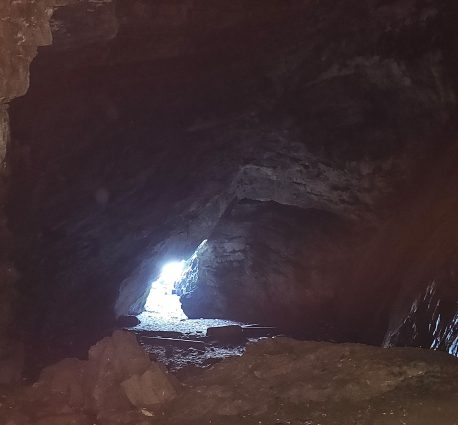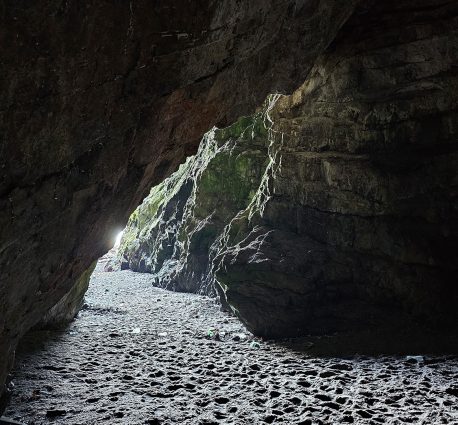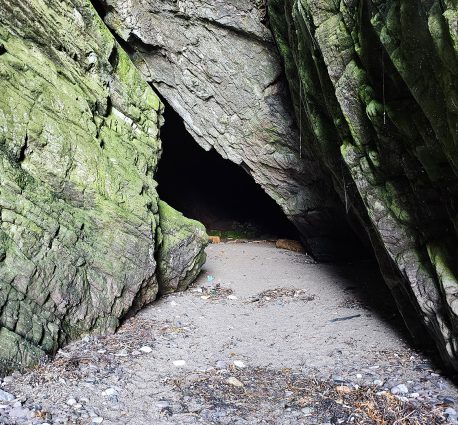MacKinnon’s Cave sits on Mull’s wild west coast near Gribun. It’s the longest sea cave in the Hebrides. Rugged cliffs and wave-carved rock make it a dramatic destination filled with myth and natural beauty.
How to Get There
Start at Balmeanach Farm, west of Pennyghael. From there, a rough track heads toward the coast. The path crosses boggy ground and slippery boulders. Eventually, it leads to a narrow opening in the cliff — visible only at low tide.
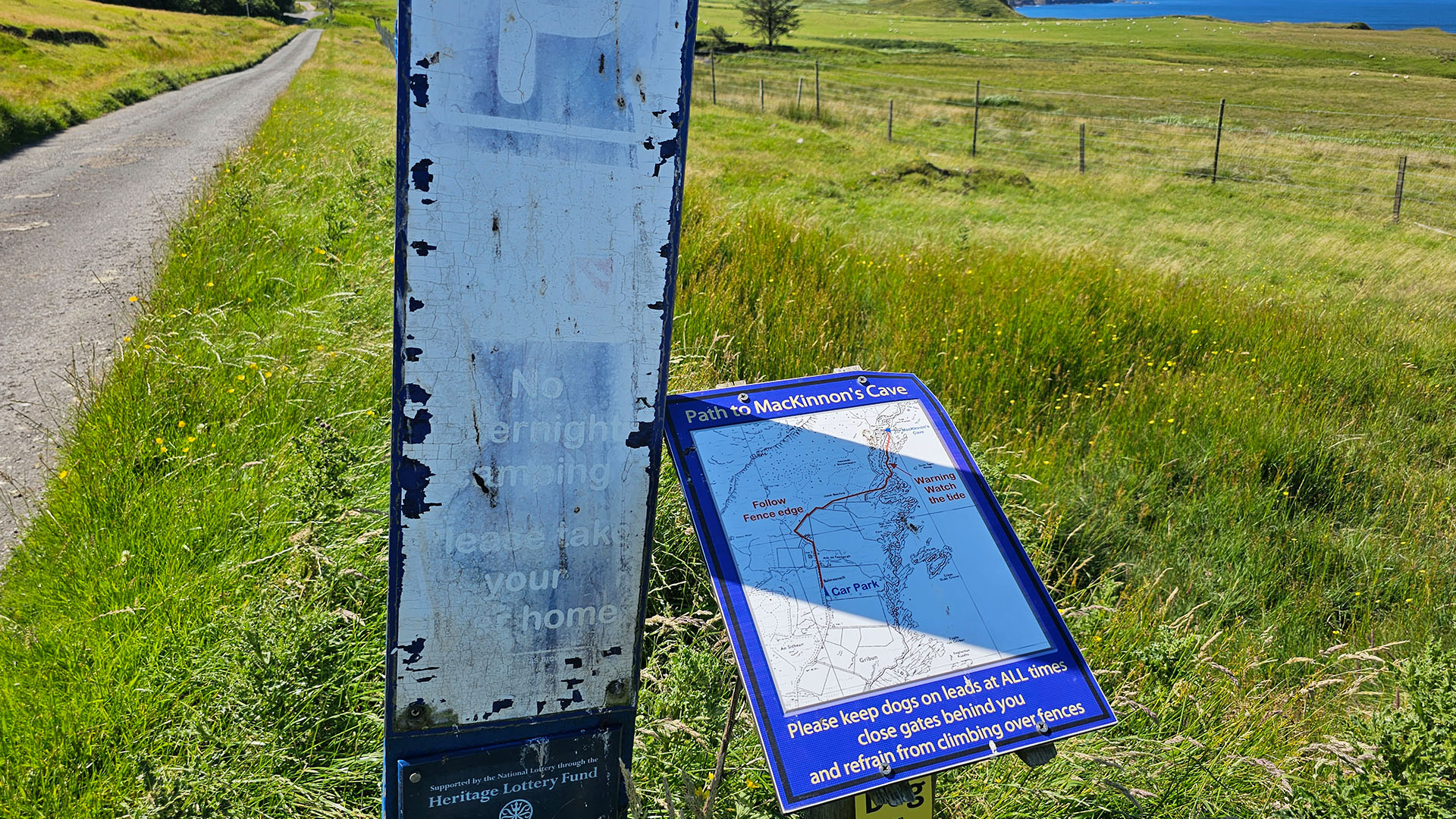
Trail begins at Balmeanach Farm — check tide times, stick to the fence, and keep dogs on leads.
MacKinnon’s Cave is only accessible at low tide, so checking tide times is essential before setting off. The sea can return quickly, and there’s no safe exit once the water rises. Timing your visit right is the most important part of planning — don’t chance it.
The approach is tough: slippery rocks, sharp drops, and loose footing even in dry weather. You’ll need good boots with grip and a reliable torch. For accurate local tides, check WillyWeather – Balmeanach or TidesChart – Isle of Mull before you go.
Inside the Cave
The cave has three chambers. Each one offers a different experience:
- Outer chamber: The biggest space, around four storeys high. Light from the cave entrance reaches much of the area, so it’s relatively easy to explore. The sand underfoot makes walking manageable, and the high walls give off a noticeable echo. It’s often the stopping point for those not venturing deeper.
- Middle chamber: The cave narrows and lowers, and daylight fades. It’s quieter, with less wind and sound. The surface gets rougher here — fewer sandy patches, more uneven rock. Navigating this part takes more care, especially in low light.
- Rear chamber: This is the deepest part of the cave, completely cut off from natural light. You’ll need a good torch to see anything beyond a few feet. At the back lies a broad, flat stone known as Fingal’s Table. Local tradition claims it was used as an altar — whether true or not, it’s a distinct and unusual feature that marks the end of the cave.
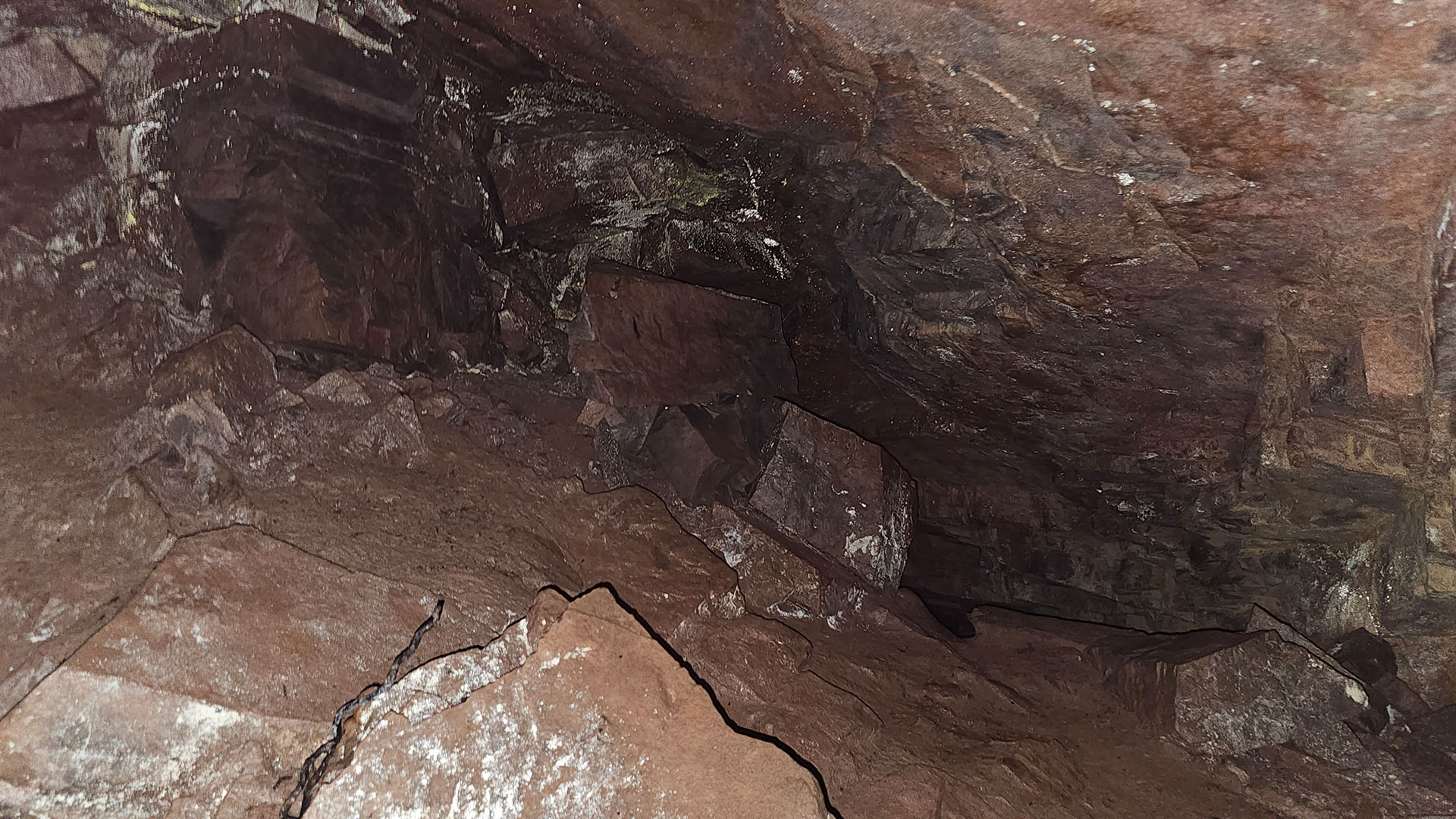
Jagged rock walls deep inside MacKinnon’s Cave — damp, dark, and shaped by centuries of pounding waves.
As tides shift, the cave changes. Rocks glisten, algae drip, and shadows play along the walls. Interior images can reveal these shifting textures and moods.
Geology and Features
This sea cave formed along a fault line where waves cut through Moine psammites — tough metamorphic rocks. The shoreline also shows Triassic conglomerates. Together, they form the backdrop of Mull’s layered volcanic landscape.
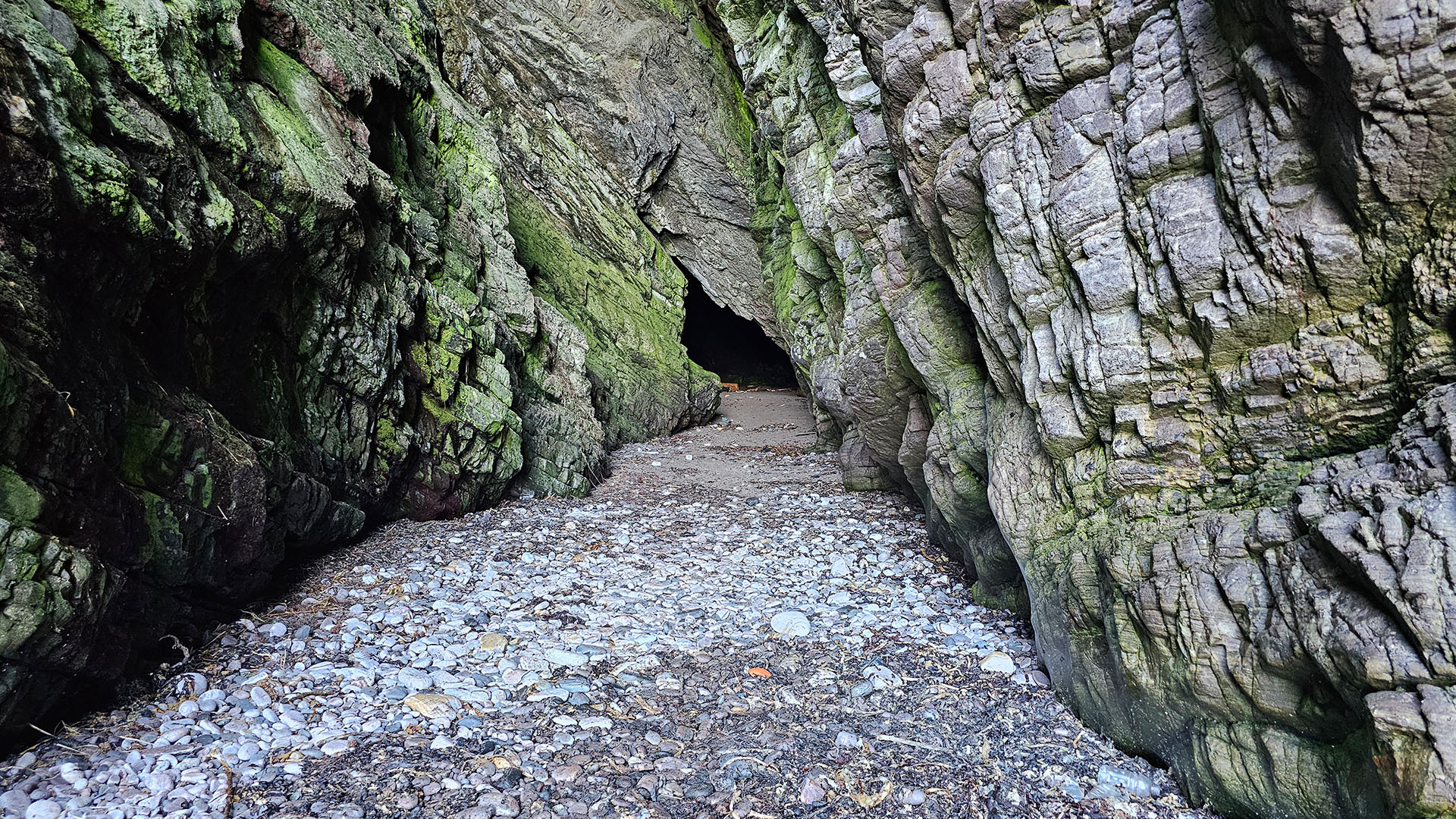
Moss-covered rock at the cave entrance shows layers of fault-fractured stone — shaped by centuries of wave erosion.
MacKinnon’s Cave is shaped by centuries of wave action working along a natural fault in the rock. You can clearly see how the sea has carved through softer layers, creating dramatic walls and smoothed surfaces. The entrance and interior show how erosion and geology combine to form deep, twisting spaces — a rare chance to observe nature’s work up close.
Stories and Folklore
Several legends surround the cave:
- Abbot MacKinnon once hid here to escape capture in the 15th century.
- One story tells of a piper who entered the cave. He challenged fairies to a musical contest. Only his dog returned — frightened and hairless.
- Fingal, the mythical warrior, is also linked to the cave. Some believe he rested here on his travels.
These tales give the cave its mysterious character. They also make it more than just a geological site — they turn it into a piece of Scotland’s folklore.
Scenic Views and Wildlife
From the approach, you can see Iona, Staffa, and the Treshnish Isles. The cliffs are home to nesting birds. You may also spot otters or sea eagles in the area.
This is a great location for coastal photography. Its mix of sea, stone, and wildlife makes every image feel alive.
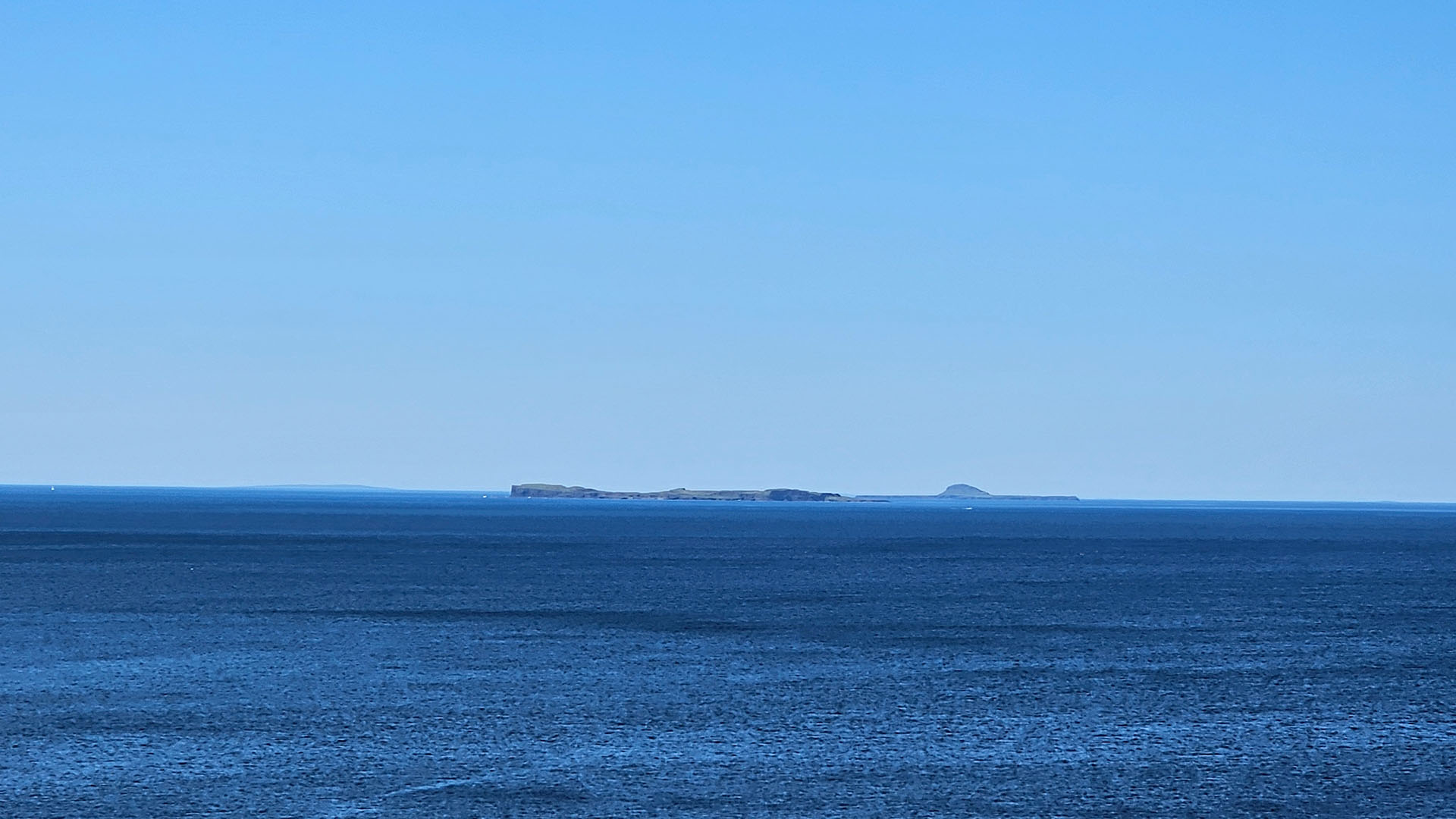
View from the cave across the sea — Staffa, Dutchman’s Cap, and Lunga stand out on the horizon in clear weather.
A Historical Visit
In 1773, James Boswell and Samuel Johnson visited the cave. They used a walking stick to measure its depth and wrote about the experience. Their account helped spread awareness of Mull’s natural wonders.
The cave looks much the same today — raw, quiet, and just as awe-inspiring.
For more info on MacKinnon’s Cave location, visit the listing: MacKinnon’s Cave.

